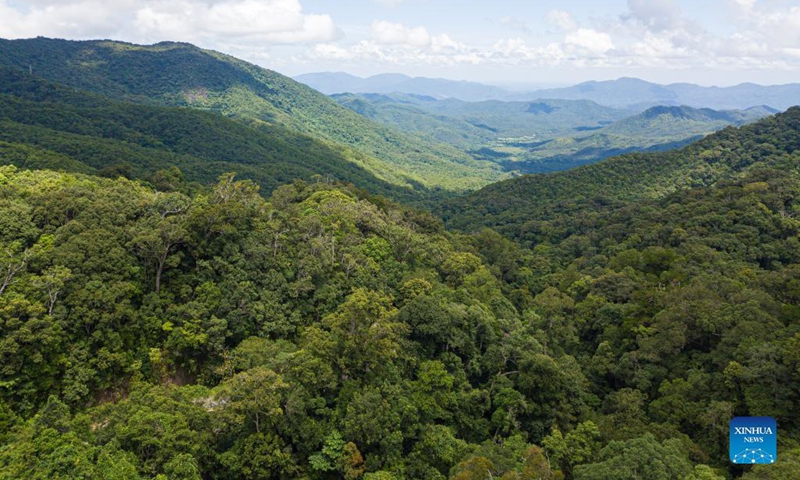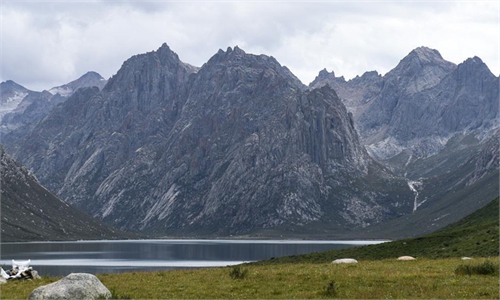
Aerial photo taken on Sept. 9, 2021 shows the view of the Hainan Tropical Rainforest National Park in south China's Hainan Province. (Xinhua/Pu Xiaoxu)
China's ecological "red line" program, widely hailed by foreign representatives at the COP15 meeting, is expected to help with global biodiversity conservation if applied to other countries, as China is ready to share its experience elsewhere, initially to countries along the routes of the Belt and Road Initiative (BRI), a senior official of the Ministry of Ecology and Environment (MEE) said Wednesday.
A British scholar has completed research to demarcate red lines for some Asian countries based on Chinese methods, and the projected preliminary results showed the findings are in line with local conditions, which proves that the program could be promoted in other countries, Gao Jixi, director of the Center for Satellite Application on Ecology and Environment of the MEE, told the Global Times on the sidelines of COP15 in Kunming, Southwest China's Yunnan Province.
Gao said China plans to first promote the program to countries along the routes of the BRI before promoting it globally.
Several foreign representatives interviewed by the Global Times, including Norwegian Ambassador to China Signe Brudeset who attended the COP15, expressed their willingness to learn more about the system.
Initiated in 2011, China's ecological conservation "red line" program identifies the country's crucial ecological zones and enforces strict protection in those areas.
So far, no less than 25 percent of the country's land has been demarcated within the red lines, covering zones critical to environmental functions, ecologically sensitive and vulnerable, and vital for biodiversity, according to the MEE.
The "red line" for ecological protection, an innovative way of nature conservation, expands the scope of conservation, improves the integrity of ecological protection and strengthens the ability to cope with climate change, said Gao, who is also leader of the Chinese research team on the post-2020 global biodiversity protection project.
"I believe that by setting red lines, China will become the first country to reach 30 percent of its area under protection by 2030," Gao said.
China is working with an international organization to jointly develop a toolkit on how to demarcate the red lines, and will optimize it to make promoting it to other countries more suitable, Gao said.
Alice Hughes, from the Center for Integrative Conservation of the Xishuangbanna Tropical Botanical Garden under the Chinese Academy of Sciences, told the Global Times that China's ecological red line program is pushing the frontiers on how we can manage the ecological environment, and it's the first systematic way of managing land use across China.
"We hope such methods can help other countries realize their post-2020 targets based on the red line program," she said, noting that a research paper on how the red line system could be applied across Southeast Asia was going to be published soon.
"China's ecological red line may be applied together with Chinese overseas investments, and that would be a very bold move in terms of how we're going to develop. But we're going to help you develop," she said.


